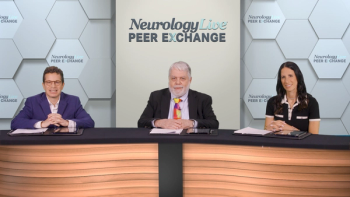Data from a randomized, double-blind study (NCT04112823) published in Neurology showed that a 16 mg dose of intravenous dexamethasone did not improve outcomes more than a 4 mg dose for patients with migraine when added to metoclopramide 10 mg IV in emergency department (ED) settings.
The trial featured 209 patients who presented with a headache meeting International Classification of Headache Disorders, 3rd edition, migraine criteria, most of which were of severe intensity (72%). Patients were randomly assigned to either dexamethasone 16 mg IV or 4 mg coadministered with metoclopramide 10 mg IV and assessed on the primary outcome of sustained headache relief after 2 hours in the ED and through 48 hours and 7 days later.
Led by Benjamin W. Friedman, MD, MS, a professor in the department of emergency medicine at the Albert Einstein College of Medicine, Montefiore Medical Center, 34% (35 of 102) and 41% (42 of 102) of participants in the metoclopramide + 4 mg and +16 mg arms, respectively, achieved sustained headache relief (absolute difference, 7%; 95% CI, –6% to –20%). Although sex was associated with the dose of dexamethasone, it was not correlated with the primary outcome (ρ = 0.11, P = 0.11.
"It is unclear whether these results can be generalized to patients in other settings, those who receive abortive treatments other than metoclopramide, and those who receive oral rather than IV corticosteroids," the study authors noted. "Because the study was halted early, we do not know the true magnitude of the absolute differences; there remains a possible 20% absolute benefit for the higher dose of dexamethasone. Finally, we did not determine the impact of medical comorbidities on the relationship between dose and efficacy."
Clinical Takeaways
- Study Timeline: Enrollment started in December 2019 but faced interruptions due to the COVID-19 pandemic. Enrollment ended in August 2022, highlighting the impact of external factors on clinical trials.
- Treatment Outcomes: The study compared two dexamethasone doses with metoclopramide for headache relief. Both doses showed moderate efficacy, with 41% achieving relief in the higher-dose group and 34% in the lower-dose group. There was a 7% absolute difference, but it wasn't statistically significant.
- Safety Profile: Adverse events were monitored, with one serious case involving a cerebellar stroke in a 23-year-old patient who received 4 mg of dexamethasone. Physicians should exercise caution when prescribing dexamethasone, especially in patients with specific risk factors.
Headache relief within 2 hours occurred in 74% (77 of 104) of patients in the low-dose group and 78% (82 of 105) of those in the high-dose cohort (absolute difference, 4%; 95% CI, –8% to –16%). Duration of headache was not correlated with the primary outcome (Spearman ρ = 0.00; P = .96) and did not affect the relationship between the dose of dexamethasone and the primary outcome. In total, 52 participants had headache duration of at least 72 hours; however, this duration did not meaningfully affect the results.
READ MORE: PACAP-Targeted Antibody Lu AG09222 Demonstrates Positive Results in Phase 2 Migraine Trial
The trial was primarily comprised of women (86%), although including sex in a logistic regression model did not substantially affect the odds of sustained relief (without sex: OR, 1.0 [95% CI, 1.0-1.1] with sex: OR, 1.0 [95% CI, 1.0-1.1]). Similar to headache duration, the presence of nausea did not affect the relationship between the dose of dexamethasone and sustained headache relief.
Among the 4- and 16-mg groups, 78% and 81% of patients, respectively, reported that they would want the same treatment for a subsequent visit. Safety was similar between the groups, as adverse events (AEs) were reported by 21% and 25% of patients in the 4 and 16-mg groups, respectively. There were 2 notable AEs reported in the 4 mg group, 1 of which was serious. The serious AE included a 23-year-old man who was diagnosed with a cerebellar stroke within 1 week of study enrollment. A second participant reported markedly elevated blood sugar. Drowsiness, dizziness, akathisia, weakness/lack of energy, stomachache, and palpitations were all among other reported AEs.
In the sample, more than one-fourth of patients reported moderate or severe headache over 48 hours after ED discharge and nearly one-third reported experiencing headache often or always throughout the week after ED discharge. “This may be a greater problem for patients in underserved communities, who cannot access specialty care in a timely manner," the study authors wrote. "These data do make a powerful argument for emergency physicians who work in this setting to familiarize themselves with affordable outpatient abortive treatments."
REFERENCES
1. Friedman BW, Solorzano C, Kessler BD, et al. Randomized trial comparing low- vs high-dose IV dexamethasone for patients with moderate to severe migraine. Neurology. 2023;101(14). doi:10.1212/WNL.000000000000207648









































